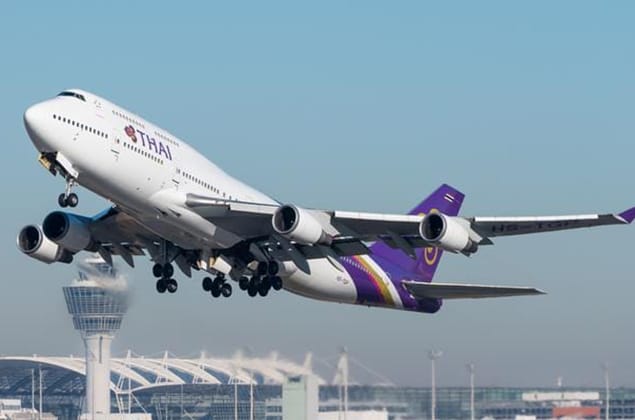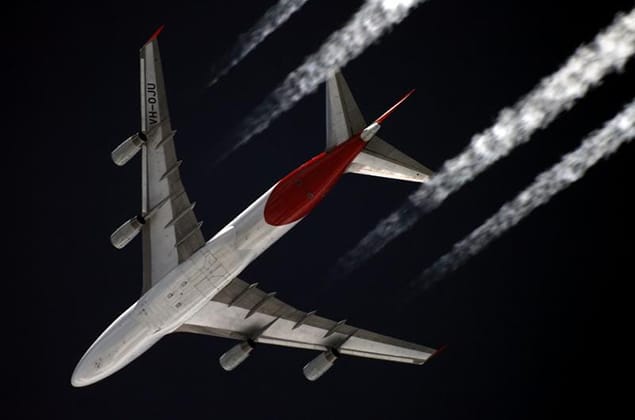Boeing 747-400 Specifications & Booking
Overview of the Boeing 747-400
The Boeing 747-400 is a commercial airliner manufactured by Boeing Commercial Airplanes. It is a wide-body, four-engine jet designed for long-haul flights. The aircraft was first introduced in the mid-1990s and remained in production until 2005. The 747-400 has a seating capacity of up to 440 passengers, depending on the configuration.
Technical Specifications
- Dimensions:
- Length: 231 feet (70.5 meters)
- Wingspan: 195 feet (59.4 meters)
- Height: 63 feet (19.1 meters)
- Weight:
- Empty weight: 352,000 pounds (159,500 kilograms)
- Maximum takeoff weight: 875,000 pounds (396,852 kilograms)
- Engines:
- Type: General Electric CF6-80C2 or Pratt & Whitney PW4056
- Thrust: 62,000 pounds-force (276.5 kN) each
- Fuel efficiency: approximately 0.25 pounds of fuel per pound-mile (0.035 kg/l)
- Performance:
- Maximum speed: Mach 0.85 (647 mph or 1,041 km/h at cruising altitude)
- Range: approximately 7,700 nautical miles (14,260 kilometers) with maximum payload
- Cruising altitude: 35,000 feet (10,668 meters)
- Capacity:
- Passengers: up to 440 (depending on configuration)
- Cargo: approximately 30,000 pounds (13,608 kilograms) or 3,000 cubic feet (85.2 cubic meters)
- Crew: typically 14-15 people
Design and Features
The Boeing 747-400 features a number of design innovations that set it apart from other commercial airliners. These include:
- Aerodynamic improvements, such as raked wingtips and optimized fuselage shape, which reduce drag and improve fuel efficiency
- Advanced avionics systems, including a glass cockpit and electronic flight instrument system (EFIS)
- Improved cabin pressurization and air quality, making the aircraft more comfortable for passengers
History and Development
The Boeing 747-400 is the fourth generation of the Boeing 747 family. The development process began in the late 1980s, with the first flight taking place on April 22, 1989. The aircraft entered commercial service in March 1995.
- Key milestones:
- First flight: April 22, 1989
- Certification: September 15, 1994
- Challenges faced during development:
- Reworking the aircraft's nose to accommodate more powerful engines and improved aerodynamics
- Integrating advanced avionics systems
- Significant upgrades or variants:
- The 747-400ER (Extended Range) variant, which features increased fuel capacity and range improvements
- The 747-400F freighter version, designed for cargo transport
Operational Use
The Boeing 747-400 is used by a variety of airlines and organizations around the world. Some notable operators include:
- Airlines:
- Asiana Airlines
- China Airlines
- Korean Air
- Lufthansa
- Singapore Airlines
- Military and government organizations:
- United States Air Force
- United States Navy
- Australian Defence Force
- Charter and cargo operators:
- AMR Corporation (American Airlines)
- Cargojet Airways
- FedEx Express
Interesting Facts
- The Boeing 747-400 is one of the most widely used and successful commercial airliners in history.
- The aircraft has a unique design feature known as the "upper deck," which features a separate passenger cabin above the main deck.
- The 747-400 was used for several notable record-breaking flights, including a non-stop flight from Los Angeles to London that set a new distance record in 1995.
Conclusion
The Boeing 747-400 is a testament to the company's commitment to innovation and excellence in commercial aviation. With its advanced avionics, improved fuel efficiency, and spacious cabins, it remains one of the most popular and reliable aircraft in service today.





